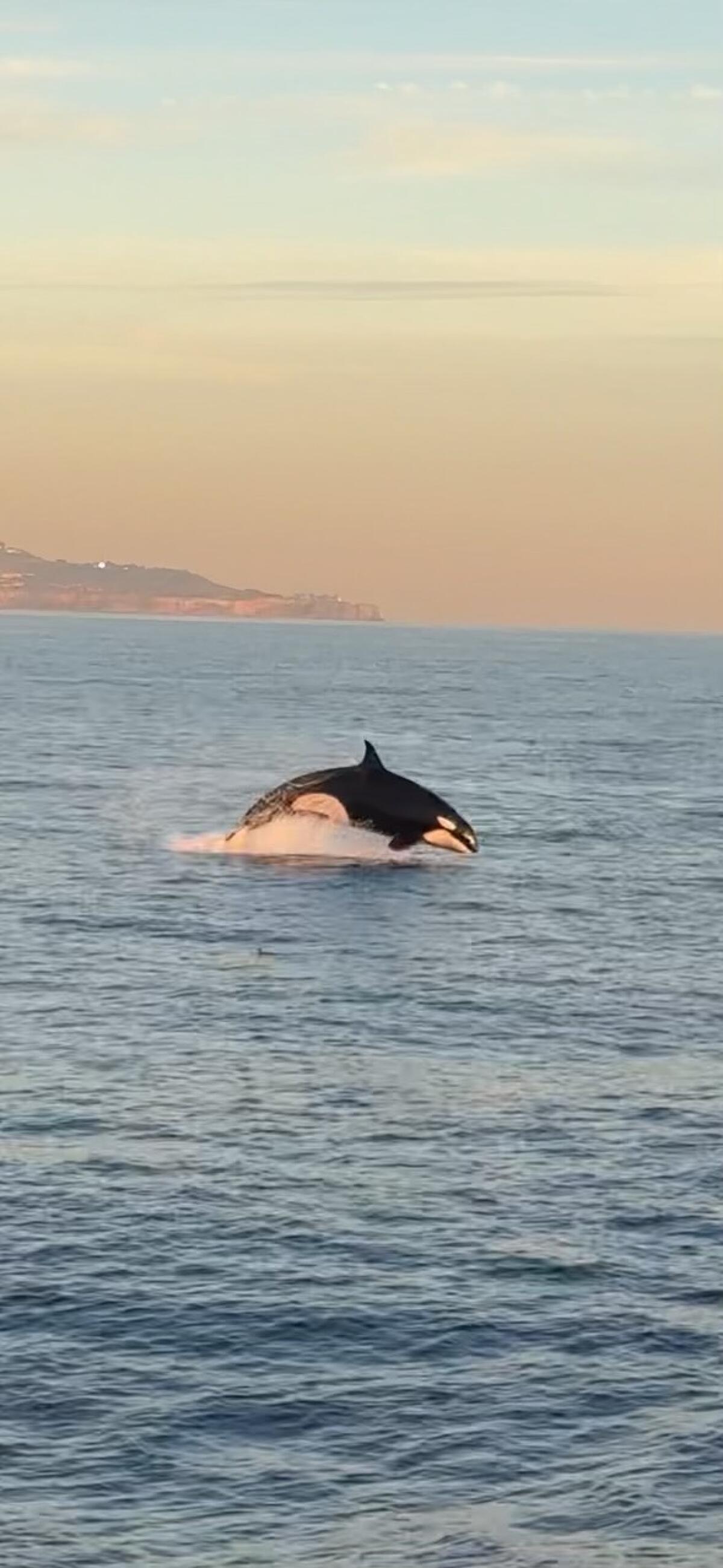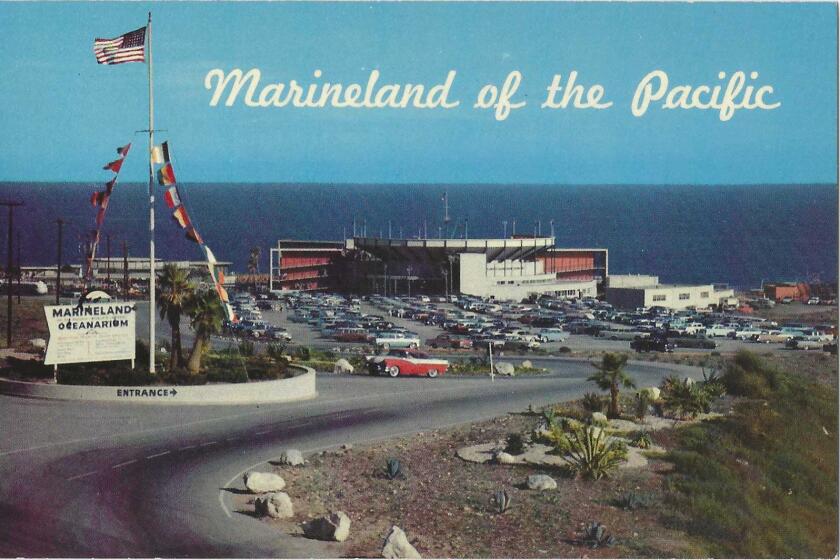Orcas are flocking to Southern California waters. One bloody, awe-inspiring spectacle shows why
- Share via
Whales native to Mexico and Central America have been spotted dozens of times from Long Beach to the Palos Verdes Peninsula to Laguna Beach over the last three weeks.
- Share via
The “National Geographic moment” happened shortly before sunset a few miles off the Palos Verdes Peninsula.
Highland resident Austin Day was spending the afternoon touring Long Beach’s Aquarium of the Pacific a couple of weeks ago with his girlfriend when they purchased last-minute tickets for a departing whale-watching tour. They were among a party of 30 to 40 people who were hoping to see migrating gray whales.
What they saw was a much rarer occurrence.
A pod of orcas — 10 by Day’s count — encircled a dolphin and thrashed and tossed the beleaguered creature about before killing and feasting on it.
One of the orcas then pulled up beside the stunned whale watchers and sprayed a blood-red mixture of air, mucus and dolphin bits out of its blowhole.

“It was pretty cool to see,” Day said. “The orcas were hanging out at first, and then a half-mile ahead they hunted one of the slower dolphins and then just ate it. I wasn’t expecting that.”
Day’s experience was one of the first this month in what he called an “unexpected and thrilling” development for whale-watching enthusiasts and tour boat operators, who are witnessing a surge in orca activity in the waters off Southern California coast.
Over the last three weeks, animals known as “killer whales” and native to Mexico and Central America have been spotted dozens of times from Long Beach to the Palos Verdes Peninsula to Laguna Beach, according to Tyler Askari, assistant port captain for Long Beach-based Harbor Breeze Yacht Charters and Cruises.
“While orcas are common to California, we just haven’t seen them come to Southern California in a couple of years,” Askari said. “It’s been incredible.”
He and other experts believe the whales are eastern tropical Pacific orcas that frequent the warmer waters south of Los Angeles. Askari said the aquatic mammals are in the area in greater frequency because of an increased abundance of dolphins, a staple of their diet.
A long history of human-on-sea-creature cruelty — whaling and whales in captivity — on the Palos Verdes Peninsula preceded this summer of orca, otter and dolphin attacks.
“We’re seeing the orcas because they’re becoming aware of the super pods and mega-pods of dolphins that range from 2,000 to 4,000, and they’re easier to hunt than other whales,” Askari said.
The last orca to draw such attention in the area was a 3-year-old juvenile dubbed Frosty, a white West Coast transient whose arrival was well documented after being spotted near Malibu with a pod of six in April.
Most orcas seen off California are spotted near Monterey or farther up the coast, Askari said.
The Dec. 11 sighting of several orcas was the first in two years, he noted. Since then, Harbor Breeze’s running tally for orca sightings is 61. That pales in comparison with fin (468), humpback (356) and blue (210) whales, for instance.
That total, however, is the highest for orcas since the 73 sightings in 2018.
Harbor Breeze runs 83-foot catamarans that can carry up to 250 passengers out of the ports of Los Angeles and Long Beach. The responses from tripgoers have elated Askari.
The last time Newport Coastal Adventure tour guides and passengers saw orcas in Newport’s waters was in 2019.
“We’ve had people tearing up upon seeing that National Geographic moment,” he said. “Some kids have been scared, but so many others have just sat in wonder to see these magnificent creatures.”
Capt. Steve Plantz charters two daily tours through his company, SoCal Whale Watching, on his 30-foot rigid inflatable boat.
“It’s just a surprising and exciting development to see these eastern tropical Pacific orcas in this area,” he said. “I haven’t seen them frequent here since 2018, 2019.”
Plantz said the San Pedro Channel, the waterway between the Palos Verdes Peninsula and Catalina Island, has been an unexpected hot spot of late.
He said his charters over the last three weeks had “been amazing.”
“The passengers have been absolutely awestruck, and the sight of these creatures — more so than dolphin or other species of whales — has brought out their passions and wonder,” Plantz said. “We’re really lucky for this moment.”
More to Read
Sign up for Essential California
The most important California stories and recommendations in your inbox every morning.
You may occasionally receive promotional content from the Los Angeles Times.














